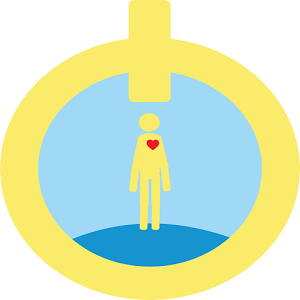We humans live in language, the results we have in our personal and professional lives depend on the conversations we have in our relationships. We respond through our emotions, which are set in a background of moods, that are born in the body.
A desire to change the results in any area of our lives can only be realised with deep learning of a new way to be. Mere rationalistic, cognitive knowledgeis not enough, if it were, we would all be living fulfilled and purposeful lives in this time where thousands of self help books abound us.
This deeper kind of learning, which will be short-changed if Ieven try to express in it words, though I must try here, needs to be FELT and EXPERIENCED in ourbodies and the only way to transform really, is through repeated PRACTICE.
Our breathing is one of the functions of the Autonomic Nervous System (ANS or involuntary nervous system). It is the part of the peripheral nervous system that functions largely below the level of consciousness, and controls many of our functions including heart rate, digestion, respiratory rate, salivation, perspiration, pupillary dilation and sexual arousal.
Breathing is an exceptional function of the body in that it is ordinarily regulated automatically by the Autonomic Nervous System, but can be consciously modified. We can’t control any of the others deliberately, but we can choose to slow our breathing down or even hold our breath for some time if we so chose to, for example like how we do in conscious breathing practices or pranayama.
Because of this, breathing can act, as a doorway between the conscious and unconscious aspects of the self, creating an accessible bridge. Our body, thoughts and emotions affect our breathing and hence affect some of the other functions of the ANS. Haven’t you noticed when people get angry or scared, they start breathing faster and their heart rate increases? Similarly, it works in reverse, we can choose particular postures and breathing styles to influence our emotions and actions. As we practice these body positions, we become more adept and create new neuro-pathways to trigger desired emotions rather than reacting from old default habits.
Thought is an electrical energy and it takes one second to change. Emotion, which is directly affected by our thoughts is chemical and can take 10-15 minutes to change. Emotions are brought about by thoughts and will create physiological changes in our bodies. Worry and fear will cause our heart rate and breathing to quicken and we can go into panic causing us to feel even worse. It is a vicious cycle. Whereas changing your body position can be done in an instant and is probably the easiest bridge you have to improving the way you feel, speak, act and hence the results you experience in your life.
Neuroscience research suggests that negative thoughts can over-stimulate the amygdala, (the small almond-shape set of neurons located deep in the brain’s medial temporal lobe which can be responsible for more fear, stress and panic) The double whammy is that when the amygdala is stimulated by perceived fear, it shuts down our physical ability to release serotonin in our brains (which is a contributor to us being able to think positively and creatively). When we put ourselves in this state, there is no getting out of the self-dug rut. In this state, we block positive memories, fantasies and ‘hope.’
The body learns by doing though, not by thinking. Consider how you learnt to ride a cycle or drive a car, you can read a 1000-page manual on riding or driving, but until you practise with your body, you will never learn.
These body positions I shared with you need repetition and practise. The keyword here is practise which means to do and do. But like most things it has to be practised and embodied. Your body has to become familiar and comfortable in this position so you will remember to call it up whenever you need to.
https://play.google.com/store/apps/details?id=com.siipl.embodyingpower
https://itunes.apple.com/us/app/embodying-power/id1034467304?mt=8
Embodying power
Watch these two videos to see for yourself how changing your body position can change your thoughts and feelings:

